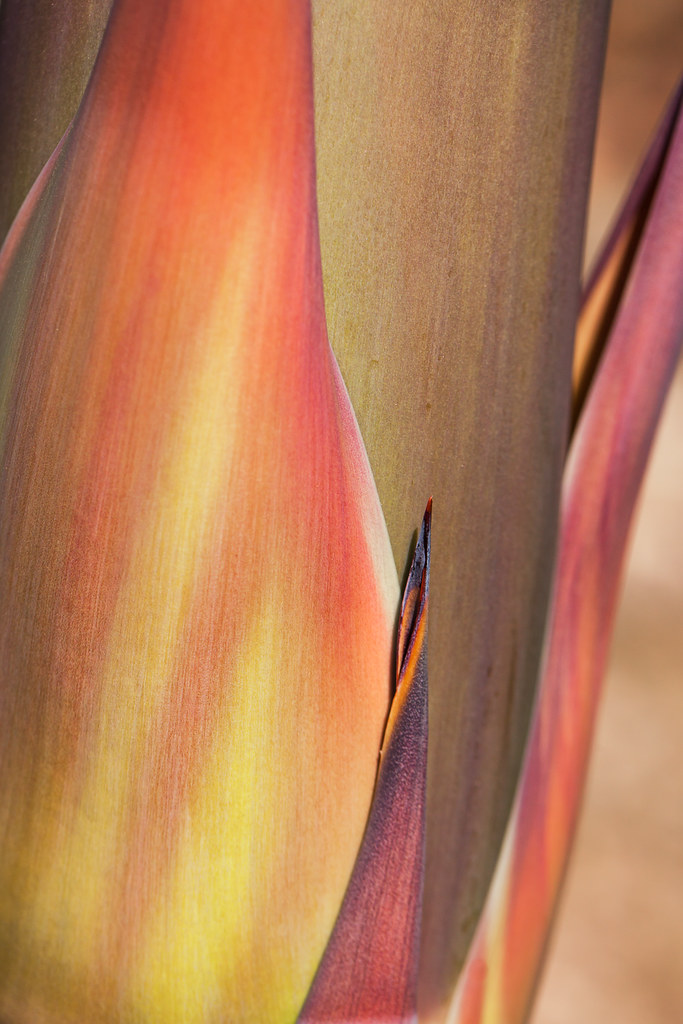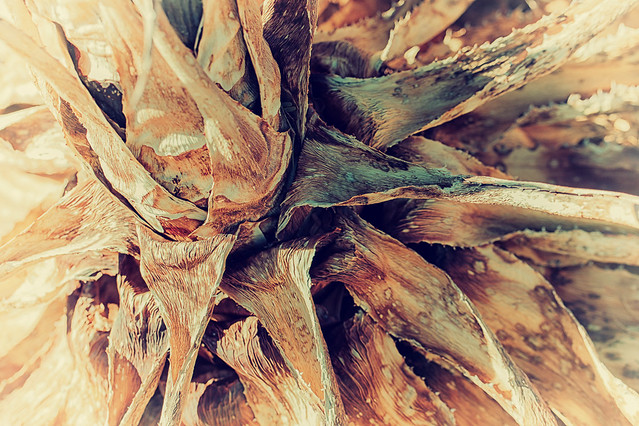Our ability to perceive quality in nature begins, as in art, with the pretty. It expands through successive stages of the beautiful to values as yet uncaptured by language. ~ Aldo Leopold
Before the agave blooms, it is a rosette of green spiny leaves. And then, in the middle of the green spines, a thick stem grows. It thickens and stretches, and often reaches twenty or more feet into the air, sending forth a burst of scented yellow flowers high enough to attract the pollinating bats flying in the dark desert night.
In the excited anticipation of the bloom, an occurrence that happens only once in the life of the plant, the beauty of the stalk is usually overlooked. But a close examination of the protruding stalk offers an unexpected desert gift – a multitude of colors. Yellows and oranges, peachy pinks and soft greens, and a spike of purple.
Another desert lesson in awareness and paying attention, in noticing the small things amidst the grand. The gift of the unexpected, the overlooked.












